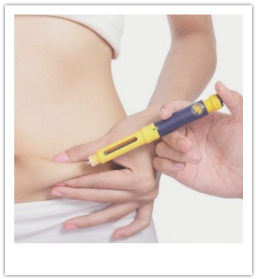|
Definition
Selective abortion, also known as selective reduction, refers to choosing to abort a fetus, typically in a multi-fetal pregnancy, to decrease the health risks to the mother in carrying and giving birth to more than one or two babies, and also to decrease the risk of complications to the remaining fetus(es). The term selective abortion also refers to choosing to abort a fetus for reasons such as the woman is carrying a fetus which likely will be born with some birth defect or impairment, or because the sex of the fetus is not preferred by the individual. Purpose A woman may decide to abort for health reasons, for example, she is at higher risk for complications during pregnancy because of a disorder or disease such as diabetes. A 2004 case reported on an embryo embedded in a cesarean section scar. Although rare, it can be life threatening to the mother. In this case, selective abortion was successful at saving the mother and the remaining embryos. However, selective reduction is recommended often in cases of multi-fetal pregnancy, or the presence of more than one fetus, typically, at least three or more fetuses. In the general population, multi-fetal pregnancy happens in only about 1-2% of pregnant women. But multi-fetal pregnancies occur far more often in women using fertility drugs. Precautions Because women or couples who use fertility drugs have made an extra effort to become pregnant, it is possible that the individuals may be unwilling or uncomfortable with the decision to abort a fetus in cases of multi-fetal pregnancy. Individuals engaging in fertility treatment should be made aware of the risk of multi-fetal pregnancy and consider the prospect of recommended reduction before undergoing fertility treatment. Description Selective reduction is usually performed between 9 and 12 weeks of pregnancy and is most successful when performed in early pregnancy. It is a simple procedure and can be performed on an outpatient basis. A needle is inserted into the woman's stomach or vagina and potassium chloride is injected into the fetus. Preparation Individuals who have chosen selective reduction to safeguard the remaining fetuses should be counseled prior to the procedure. Individuals should receive information regarding the risks of a multi-fetal pregnancy to both the fetuses and the mother compared with the risks after the reduction. Individuals seeking an abortion for any reason should consider the ethical implications whether it is because the fetus is not the preferred sex or because the fetus would be born with a severe birth defect. Aftercare Counseling should continue after the abortion because it is a traumatic event. Individuals may feel guilty about choosing one fetus over another. Mental health professionals should be consulted throughout the process. Risks About 75% of women who undergo selective reduction will go into premature labor. About 4-5% of women undergoing selective reduction also miscarry one or more of the remaining fetuses. The risks associated with multi-fetal pregnancy are considered higher. Normal results In cases where a multi-fetal pregnancy of three or more fetuses is reduced to two fetuses, the remaining twin fetuses typically develop as they would if they had been conceived as twins. Key Terms Multi-fetal pregnancy: A pregnancy of two or more fetuses. Selective reduction: Typically referred to in cases of multi-fetal pregnancy, when one or more fetuses are aborted to preserve the viability of the remaining fetuses and decrease health risks to the mother.
4 Comments
Unlike IUI cycles, which take place over the course of one month using gonadotropins to stimulate the ovaries to produce one to three eggs, many IVF cycles take place over a two-month time span. Additional medications may precede ovarian stimulation with higher doses of gonadotropins for a longer period of time in order to obtain a greater number of eggs to be retrieved and exposed to sperm in the ART laboratory to create embryos for transfer to the uterus.
Each fertility center has its own protocols for IVF stimulation and physicians choose the protocol that they believe will optimize ovarian response for each patient based on her individual clinical situation. Patient age, diagnosis and previous response to stimulation are all considered. The following is a general description of a typical ART stimulation protocol. Your doctor or nurse will discuss your protocol with you and give you specific instructions regarding medication dose and schedule. IVF stimulation protocols start with your period. You will need to contact your physician or nurse on the first day of your period for specific instructions. These protocols are used for women doing IVF with their own eggs and for women who are Egg Donors. Birth Control Pills Many physicians will use the first month of the IVF cycle to quiet the ovaries in order to have control during the second month of stimulation. This may involve taking birth control pills starting cycle day 3 for 12 to 28 days. GnRH Agonists The GnRH agonist, leuprolide acetate or Lupron, is used to suppress the ability of the pituitary gland to release follicle stimulating hormone FSH and leutinizing hormone LH. This means that the ovaries will not be able to make an egg or ovulate without taking gonadotropins. This works well for IVF cycles so that gonadotropins can be given to recruit a good number of follicles containing eggs without the risk that a spontaneous LH surge would cause ovulation before egg retrieval. There are several ways to use leuprolide acetate/Lupron in IVF stimulation protocols. Your physician will choose the protocol that will optimize your response. Protocols include:
Once there are enough mature follicles and a high enough estradiol level, both leuprolide acetate/Lupron and gonadotropins are discontinued and a single injection of HCG is taken on a particular day at a specific time that is determined by the scheduled egg retrieval day and time. HCG injections are generally given 32 to 34 hours before scheduled egg retrieval.
Most women take gonadotropins for 3 to 5 days and then have an ultrasound and blood test to evaluate their response. At this point the dosage may stay the same, increase or decrease and another ultrasound and blood test will be scheduled within 1 to 3 days. Stimulation often takes 10 to 13 days. This process continues until there are enough follicles of a good size and a high enough estradiol level to proceed to egg retrieval. At that time all stimulation protocol medications are discontinued and a single injection of an HCG product (Ovidrel, Novarel, Pregnyl, generic HCG) is given 32 to 34 hours prior to egg retrieval. This injection causes the eggs to mature and be retrieved from the ovaries. Intended Mothers or Egg Donors should not require any medications after egg retrieval. Progesterone Most physicians will prescribe a Progesterone product starting the day of or day after egg retrieval each evening until the pregnancy test. Progesterone may be given orally, vaginally or as an IM injection. Progesterone stimulates the uterine lining (endometrium) to continue to develop so that an embryo that implants will have a thick, supportive environment to nourish it. Please remember that your clinic may require a different medical protocol for your unique situation and this information is not to take the place of your own physician’s orders. Second Chance Surrogacy does not have the medical knowledge to advise or diagnose medical treatments or medications. |
Second Chance Surrogacy
第三方辅助生殖领域信息及知识普及。为您在面临重要选择时,提供咨询及帮助。 归档
July 2017
文章分类
|
Second chance Surrogacy
|
|
|



 RSS Feed
RSS Feed